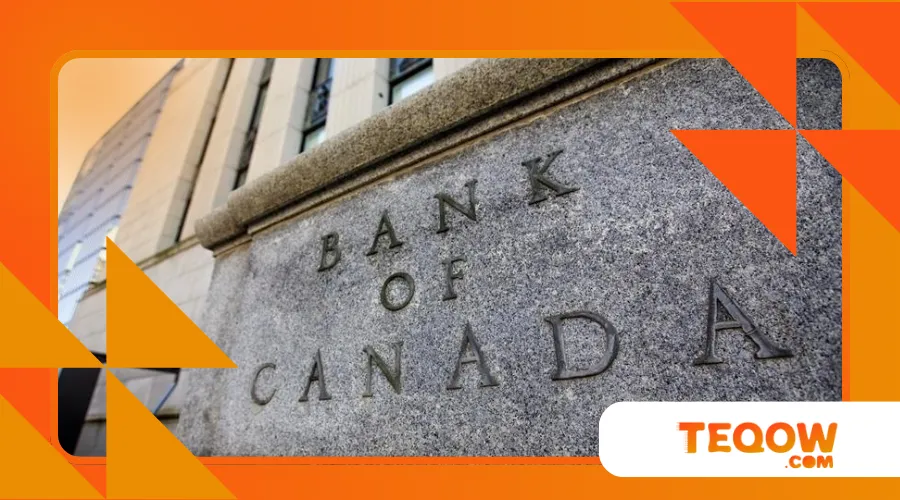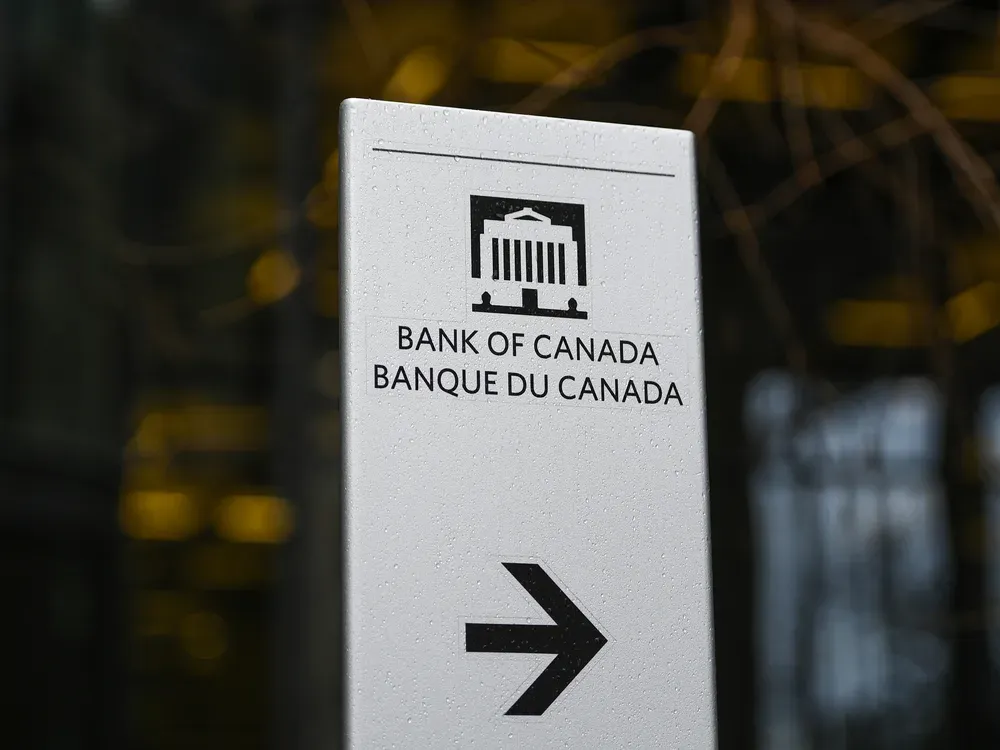Bank of Canada Warns US Trade War Threatens Economy

The trade war impact reverberating from U.S. tariffs is no longer a distant concern but a pressing reality for Canada’s economy.
On May 8, 2025, the Bank of Canada (BoC) issued a stark warning: prolonged trade hostilities, particularly with the United States, could unravel recent economic gains and destabilize financial systems.
This isn’t just a policy skirmish—it’s a structural challenge that could redefine Canada’s economic trajectory.
With global trade tensions escalating, the BoC’s Financial Stability Report underscores the urgency of preparing for a storm that’s already brewing.
Why should Canadians care? Because the ripple effects of this trade war could touch every household, business, and policymaker in the nation.
As trade relations become increasingly strained, understanding the implications of these tariffs is vital for informed decision-making at all levels of society.
A Fragile Recovery at Risk
Canada’s economy was showing signs of resilience before the U.S. ignited a trade war with sweeping tariffs in April 2025.
Lower interest rates had reduced household debt, business insolvencies were declining, and banks had bolstered their capital buffers.
But the BoC cautions that these gains are fragile.
The trade war impact introduces unprecedented uncertainty, threatening to reverse progress.
For instance, the report highlights that loans to trade-sensitive industries, like manufacturing and agriculture, account for 15% of Canadian banks’ assets.
A prolonged downturn could trigger a cascade of defaults, tightening credit access and choking economic activity.
Consider a small auto parts manufacturer in Windsor, Ontario, reliant on cross-border supply chains.
U.S. tariffs of 25% on Canadian autos have spiked costs, forcing the company to lay off workers and delay expansion.
This isn’t hypothetical—it’s a microcosm of the broader trade war impact on Canadian businesses.
The BoC warns that if credit losses mount, banks may scale back lending, amplifying economic distress.
It’s like a forest fire: a single spark (tariffs) can ignite a blaze that consumes entire ecosystems (industries).
Moreover, the interconnectedness of global markets means that disruptions in Canada can have far-reaching consequences, affecting trade partners and consumers worldwide.
Financial Stability Under Siege
The BoC’s report paints a sobering picture of financial stability risks.
While Canada’s banking system is robust, with loan loss provisions fortified over recent years, it’s not invincible.
The trade war impact could manifest as market volatility, potentially escalating into dysfunction in extreme scenarios.
Governor Tiff Macklem emphasized, “A long-lasting trade war poses the greatest threat to the Canadian economy.”
This isn’t hyperbole—Reuters reported on May 8, 2025, that prolonged tariffs could push Canada into a recession, with mortgage arrears potentially exceeding 0.5%, a level unseen since the 2008 financial crisis.
To illustrate, imagine a Toronto-based hedge fund heavily exposed to Government of Canada bonds.
As trade uncertainty spikes, bond yields fluctuate wildly, eroding the fund’s portfolio value.
This triggers margin calls, forcing the fund to liquidate assets at a loss, further destabilizing markets.
The BoC notes that hedge funds’ growing exposure to these bonds heightens systemic risks.
It’s a reminder that financial stability isn’t just about banks—it’s about the interconnected web of institutions that keep the economy humming.
The importance of maintaining a stable financial environment cannot be overstated, as it underpins consumer confidence and investment decisions.
Table 1: Economic Indicators Before and After Tariff Onset
| Indicator | Pre-Tariff (Q4 2024) | Post-Tariff (Q1 2025) |
|---|---|---|
| Household Debt-to-Income | 175% | 172% |
| Business Insolvencies | 2,800 annually | 3,200 annually |
| Bank Loan Loss Provisions | 0.8% of assets | 1.1% of assets |
Source: Bank of Canada Financial Stability Report, May 2025
+ Bank of Canada Interest Rate Policy in 2025: Impacts on Growth and Inflation
Households on the Edge
For Canadian households, the trade war impact is a double-edged sword.
Lower interest rates have eased mortgage burdens, with arrears on home loans remaining below historical averages.
Yet, non-mortgage households—those without homeownership’s financial cushion—are struggling.
The BoC reports that credit card and auto loan delinquencies (over 60 days late) have surpassed pre-pandemic levels, hitting 3.2% in Q1 2025.
This statistic signals growing stress among renters and younger Canadians, who face rising costs amid trade-induced inflation.
Picture a single parent in Calgary, juggling rent, childcare, and a car payment.
As tariffs drive up the cost of imported goods, her grocery bill climbs, and her auto loan interest rate creeps higher due to market uncertainty.
She misses a payment, and her credit score tanks, limiting her options.
This scenario underscores the BoC’s warning: an extended trade war could push mortgage arrears to levels not seen in a generation, particularly if job losses in trade-sensitive regions like Ontario and Alberta accelerate.
The implications of these financial strains could lead to broader social issues, including increased reliance on social services and a decline in overall quality of life for affected families.

Global Context: A Domino Effect
The trade war impact isn’t confined to Canada—it’s a global phenomenon.
The U.S.-China trade war, with tariffs reaching 145% on Chinese goods, has disrupted supply chains worldwide.
China’s factory activity plummeted in April 2025, with the purchasing managers’ index dropping to 49.0, the lowest since December 2023.
Meanwhile, the EU is preparing retaliatory tariffs on U.S. products, signaling a broader escalation.
For Canada, caught in the crossfire, the stakes are high.
The U.S. accounts for 75% of Canadian exports, making any disruption a direct hit to GDP.
The BoC’s scenario analysis is chilling: a prolonged trade war could shrink Canada’s economy by 2% annually, with knock-on effects across industries.
Agriculture, for instance, faces retaliatory tariffs from the U.S., jeopardizing fears of a “full-blown crisis,” as U.S. farmers told CNBC on April 28, 2025.
Canadian farmers, too, are reeling, with canceled orders from U.S. buyers disrupting cash flows.
It’s akin to a dam breaking: the initial crack (tariffs) unleashes a flood that engulfs everyone downstream.
The interconnected nature of global economies means that solutions must be collaborative, requiring nations to work together to mitigate the fallout of such conflicts.
++ Personal Finance Strategies in Canada for 2025: Digital Tools and Economic Trends
Table 2: Trade War Impact on Key Canadian Sectors
| Sector | Export Value to U.S. (2024) | Projected Loss (2025) |
|---|---|---|
| Automotive | $80 billion | $12 billion |
| Agriculture | $35 billion | $5 billion |
| Energy | $120 billion | $8 billion |
Source: Statistics Canada, BoC Estimates, 2025
Policy Responses: Can Canada Adapt?
Faced with this existential threat, what can Canada do?
The BoC has already cut interest rates to 4.25% in May 2025, aiming to cushion the blow.
But as Governor Macklem noted in a March 2025 speech, monetary policy alone can’t offset a structural shock like a trade war.
Fiscal measures, such as targeted subsidies for affected industries, could help, but the BoC warns that government support must be strategic to avoid inflating deficits.
Prime Minister Mark Carney, a former BoC governor, has pledged to navigate this crisis with a “steady hand,” leveraging his experience managing Brexit-era volatility at the Bank of England.
Yet, Carney faces a Herculean task.
The trade war impact demands a delicate balance: stimulating growth without fueling inflation, supporting businesses without distorting markets, and negotiating with a mercurial U.S. administration.
Could Canada pivot to new trade partners, like the EU or Asia, to offset U.S. losses?
It’s a tantalizing idea, but reorienting supply chains takes years, not months.
In the interim, Carney’s government must prioritize resilience—bolstering retraining programs for displaced workers and incentivizing domestic production to reduce reliance on U.S. markets.
For more insights into potential strategies, you can explore Canada’s Trade Diversification Strategy.

The Human Cost: Beyond the Numbers
Numbers tell part of the story, but the human toll of the trade war impact is visceral.
In Sarnia, Ontario, a chemical plant worker faces an uncertain future as U.S. tariffs choke demand for Canadian petrochemicals.
In Halifax, a small retailer grapples with higher costs for U.S.-sourced goods, passing prices onto customers who are already stretched thin.
These stories aren’t outliers—they’re the new normal unless the trade war de-escalates.
The BoC’s warning is a clarion call: Canada must act swiftly to mitigate risks.
But action requires consensus, and political polarization could hamstring efforts.
Will Canadians rally behind a unified strategy, or will division weaken our resolve?
This question isn’t just rhetorical—it’s a challenge to policymakers and citizens alike.
The trade war isn’t a distant storm; it’s here, and its winds are already testing Canada’s foundations.
Addressing these challenges requires not only policy adjustments but also a commitment to fostering community resilience and support for those affected.
Looking Ahead: A Call to Action
The trade war impact is a test of Canada’s economic and social resilience.
The BoC’s report isn’t just a warning—it’s a blueprint for survival.
Strengthening financial buffers, diversifying trade, and supporting vulnerable households are non-negotiable priorities.
But beyond policy, this moment demands courage and adaptability from every Canadian.
Like a ship navigating a gale, Canada must adjust its sails, reinforce its hull, and chart a course through the turbulence.
The path forward won’t be easy, but Canada has weathered storms before.
With strategic leadership and collective resolve, we can mitigate the trade war’s damage and emerge stronger.
The question isn’t whether we’ll face challenges—it’s whether we’ll rise to meet them.
Let’s prove we can.
